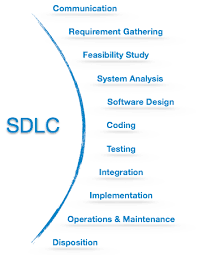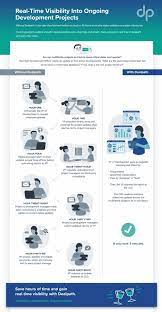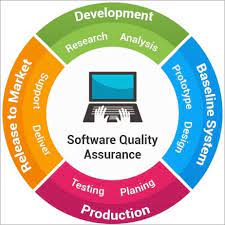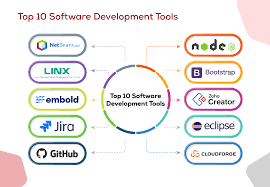Understanding the Significance of SDLC in Software Engineering
The Importance of Software Development Life Cycle (SDLC) in Software Engineering
Software Development Life Cycle (SDLC) is a systematic process used by software engineers to design, develop, and test high-quality software applications. It is a crucial framework that ensures the successful completion of software projects while meeting customer requirements and quality standards.
Phases of SDLC:
- Planning: In this phase, project requirements are gathered, analyzed, and documented. The project scope, timeline, and resources are determined.
- Analysis: This phase involves a detailed study of the system requirements. It helps in understanding the functionalities expected from the software.
- Design: The design phase focuses on creating a blueprint for the software based on the requirements gathered in the previous phases. It includes architectural design, database design, and user interface design.
- Implementation: In this phase, the actual coding of the software takes place. Developers write code according to the design specifications and guidelines.
- Testing: The testing phase involves identifying defects or bugs in the software and fixing them. Various testing methods like unit testing, integration testing, and system testing are performed to ensure that the software functions correctly.
- Deployment: Once the software is tested and approved, it is deployed to production environments for end-users to use.
- Maintenance: The maintenance phase involves updating or modifying the software to meet changing user needs or address any issues that arise post-deployment.
The Benefits of SDLC:
- Better Planning: SDLC helps in proper planning and organization of resources for efficient project management.
- Quality Assurance: By following a structured approach like SDLC, software engineers can ensure high-quality deliverables that meet customer expectations.
- Risk Management: SDLC allows for early identification and mitigation of risks throughout the development process.
- Cycle Repeatability: SDLC provides a repeatable process that can be applied to future projects for consistent results.
In conclusion, Software Development Life Cycle (SDLC) plays a vital role in ensuring successful software development projects by providing a structured approach from inception to deployment. By following SDLC methodologies, software engineers can deliver reliable and high-quality software solutions that meet user needs effectively.
Understanding the Software Development Life Cycle (SDLC): Key Stages and Phases Explained
- What are the 7 steps in software testing life cycle?
- What are the 7 stages of an SDLC?
- What is SDLC design phase?
- What are the 5 stages SDLC?
What are the 7 steps in software testing life cycle?
In software engineering, the Software Testing Life Cycle (STLC) consists of seven essential steps that guide the testing process to ensure the quality and reliability of software applications. These steps include requirements analysis, test planning, test case development, environment setup, test execution, defect reporting and tracking, and test closure. Each step in the STLC is crucial for identifying defects early in the development cycle, ensuring that the software meets user requirements, and delivering a high-quality product to end-users. By following these seven steps diligently, software development teams can enhance the efficiency and effectiveness of their testing efforts while maintaining a focus on delivering superior software solutions.
What are the 7 stages of an SDLC?
In software engineering, the Software Development Life Cycle (SDLC) consists of seven key stages that guide the development process from planning to deployment and maintenance. These stages are essential for ensuring a systematic and structured approach to software development. The seven stages of an SDLC include Planning, Analysis, Design, Implementation, Testing, Deployment, and Maintenance. Each stage plays a crucial role in the overall success of a software project by defining requirements, creating designs, writing code, testing functionality, deploying the software for use, and maintaining it post-deployment. Following these stages helps software engineers manage projects effectively and deliver high-quality software solutions that meet user needs.
What is SDLC design phase?
The Software Development Life Cycle (SDLC) design phase is a critical stage in software engineering where the blueprint for the software system is created based on the requirements gathered during the planning and analysis phases. In this phase, software architects and designers define the overall structure of the software, including its architecture, database design, user interface layout, and other technical specifications. The design phase serves as a foundation for the development team to follow while coding the software application. It ensures that the final product aligns with customer needs and quality standards by translating requirements into a detailed technical design that guides the implementation process effectively.
What are the 5 stages SDLC?
In software engineering, the Software Development Life Cycle (SDLC) consists of five essential stages that guide the development process of software applications. These stages are Planning, Analysis, Design, Implementation, and Testing. Each stage plays a crucial role in ensuring the successful completion of a software project while meeting customer requirements and quality standards. The Planning stage involves gathering project requirements and defining scope, followed by Analysis to study system requirements in detail. Design focuses on creating a blueprint for the software, Implementation involves coding based on design specifications, and Testing is crucial for identifying and fixing defects. These five stages of SDLC provide a structured framework for software engineers to follow throughout the development lifecycle.












